Visit the Valley of the Seven Bulls, see Issyk-Kul and relax in the thermal springs
- Duration: 2 days.
- Price: from 700$ 620$ for group
- Group size: Small group tour
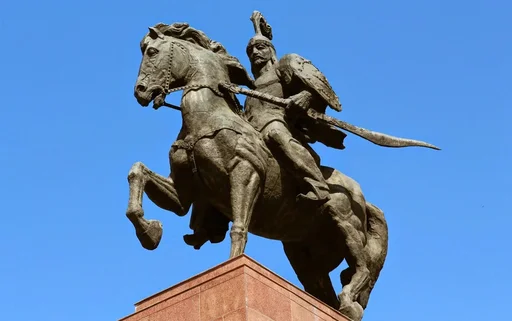
Kyrgyzstan is the heart of Central Asia, whose history spans millennia. On this mountainous land, the paths of nomadic tribes and caravans of the Great Silk Road crossed. Unlike neighboring regions with their ancient oasis cities or boundless steppes, the history of Kyrgyzstan took shape among the majestic mountains of the Tian Shan, where a unique nomadic culture emerged. Scythian warriors and Turkic khagans, Buddhist monks and Islamic emirs, Russian generals and Soviet commissars all left their mark here. Each of these layers impressed itself on the land, creating a colorful historical pattern - from prehistoric petroglyphs to modern independent institutions.
Archaeological finds show that people inhabited the territory of present-day Kyrgyzstan since deep antiquity. In the high-mountain area of Saimaluu-Tash (at an elevation of about 3,200 m) one of the world’s largest galleries of petroglyphs has been discovered: more than 10,000 carved images (and by some estimates up to 98,000 drawings) on dark basalt boulders. These rock engravings from the Bronze and Early Iron Ages - scenes of hunting, pastoral life, solar symbols - are like a frozen chronicle of prehistoric life. They are dated from the 3rd–2nd millennia BCE to the first centuries CE, demonstrating continuous settlement of these places. Besides Saimaluu-Tash, kurgans and burials of ancient pastoral cultures are scattered across Kyrgyzstan, indicating that as early as the Chalcolithic and Bronze Ages routes of nomadic tribes passed here. The earliest known inhabitants of the region were bearers of the Saka (Scythian) culture, who left kurgans along Lake Issyk-Kul and in the valleys of the Tian Shan. Thus, long before written history, the land of the Kyrgyz was a kind of crossroads of civilizations, where the cultural influences of the steppe, mountains, and oases collided and mingled.

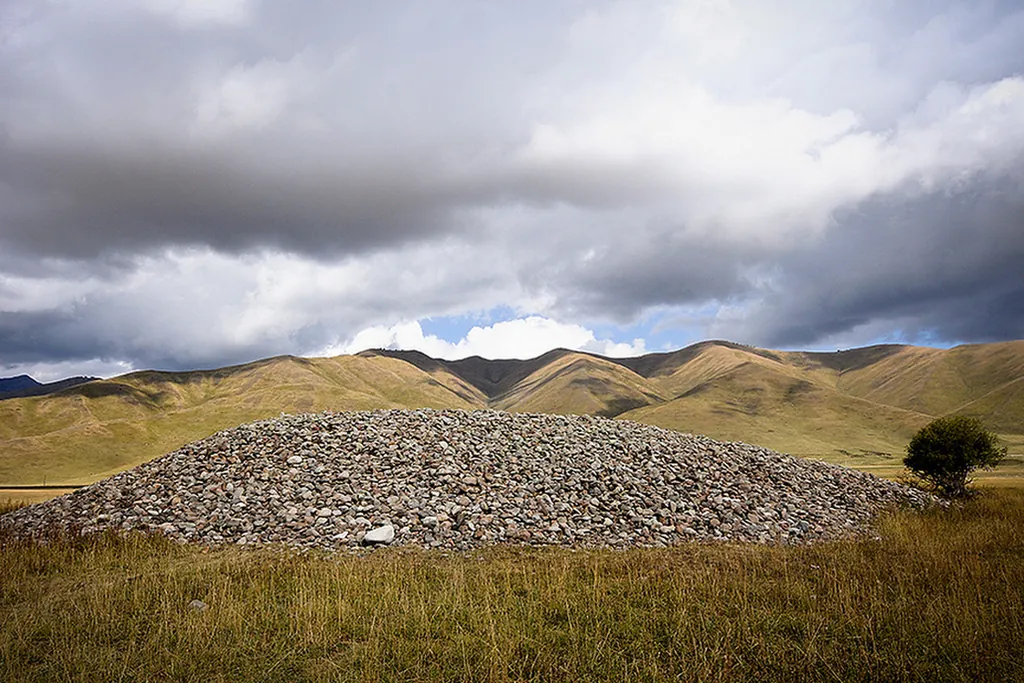
Already in antiquity, the territory of Kyrgyzstan entered the orbit of the Great Silk Road - a trans-Eurasian trade artery. Through the Fergana Valley and mountain passes caravans traveled between China, India, Persia, and Europe, and ancient cities arose along this route. One of them, Osh - founded, according to legend, 3,000 years ago - lay at the junction of trade roads and played the role of a regional center for trade in silk and spices. Above the city rises the sacred mountain Sulayman-Too, which since ancient times has been a place of worship. According to UNESCO, Sulayman-Too is “the most complete example of a sacred mountain in all of Central Asia, revered for several millennia.” On its slopes archaeologists have counted more than a hundred ancient sanctuaries and cave temples covered with petroglyphs, as well as remains of structures from different eras. Local legends say that the biblical Solomon (Suleiman) himself visited here, and on the summit they point out the “Throne of Solomon.” Over time, Muslim structures also appeared on the mountain - for example, a small mosque laid in 1510 by the ruler Babur. Today Sulayman-Too in Osh is a World Heritage site where pilgrims ascend in faith in the mountain’s healing power. The mountain is still crowned with white stairways of paths, small mosques, and caves with ancient drawings, embodying spiritual continuity from the eras of shamanism and Buddhism to the triumph of Islam.
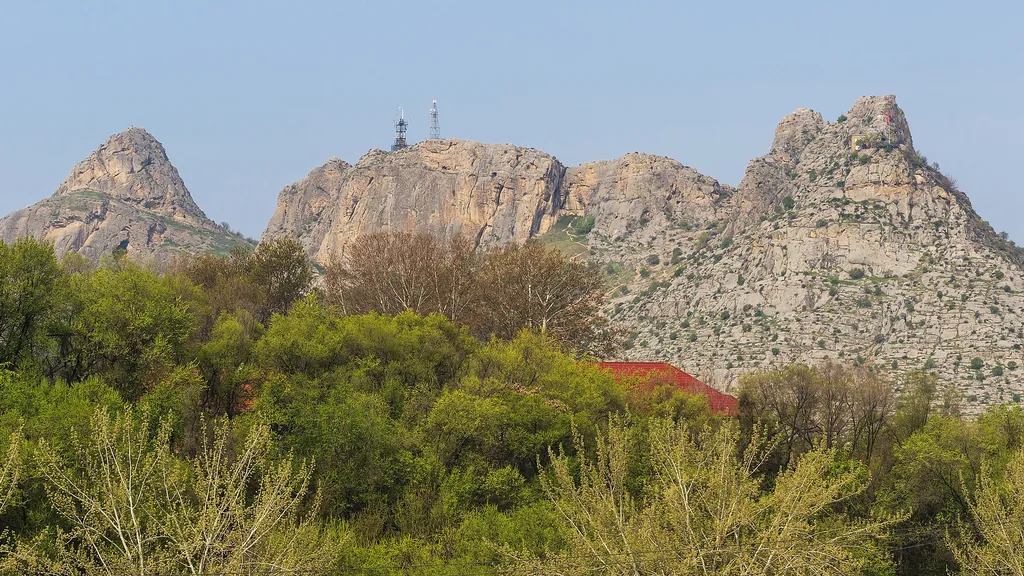

In the early Middle Ages, the territory of present-day Kyrgyzstan was inhabited by Turkic-speaking tribes who practiced Tengrism - the cult of the Sky (Tengri) and spirits of nature. Until the 8th century, Buddhism and Zoroastrianism were also widespread in the region’s oases thanks to the influence of neighboring empires and merchants. A turning point came with the Battle of Talas in 751: on the banks of the Talas River (now on the border of Kazakhstan and Kyrgyzstan) the armies of the Arab Caliphate and China’s Tang dynasty clashed. The Arab defeat of the Tang forces halted China’s expansion into Central Asia and opened the way for the spread of Islam. In the following centuries, the Turkic rulers of the region gradually adopted the new faith. By the 10th century, the first Muslim Turkic dynasty - the Karakhanids - was established in Semirechye. The rulers of the Karakhanid Khaganate (from Turkic, “black khans”) adopted Islam, and their state flourished at the crossroads of steppe and city. The capital of the Karakhanids was the city of Balasagun in the Chuy Valley, where the Burana Minaret - a majestic 11th-century brick tower that served as the minaret of a cathedral mosque - has survived to this day. Now the Burana Tower (25 meters high today, once over 40 m) is one of the oldest architectural monuments in all of Central Asia. Nearby archaeologists have found remains of a citadel, mausoleums, and balbals (ancient stone sculptures). In southern Kyrgyzstan, in the city of Uzgen, the three-domed mausoleums of Karakhanid rulers and a slender 12th-century brick minaret have also survived - evidence of the high level of architecture of that era. The Karakhanids created on the territory of Kyrgyzstan a solid bridge between nomadic culture and Islamic civilization, turning ancient caravanserais and settlements (for example, Tash-Rabat high in the mountains) into centers of sedentary culture. Their legacy - the Islamization of the region and the flourishing of urban planning - had a lasting impact: even to this day, echoes of the Persian-Islamic influence of the Karakhanid period are visible in many local toponyms and traditions.
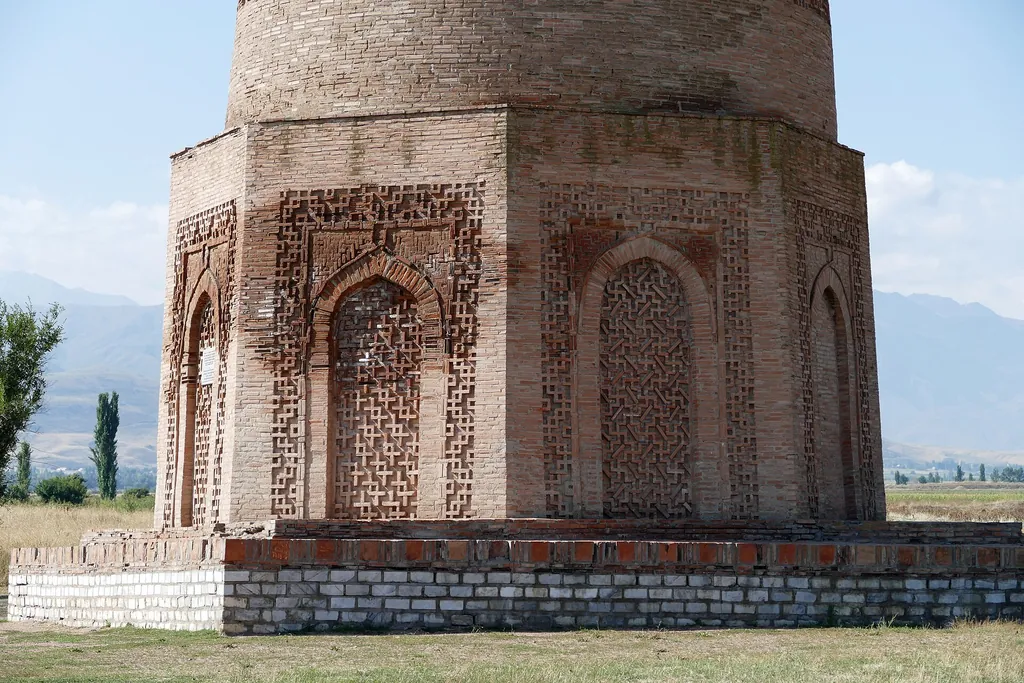
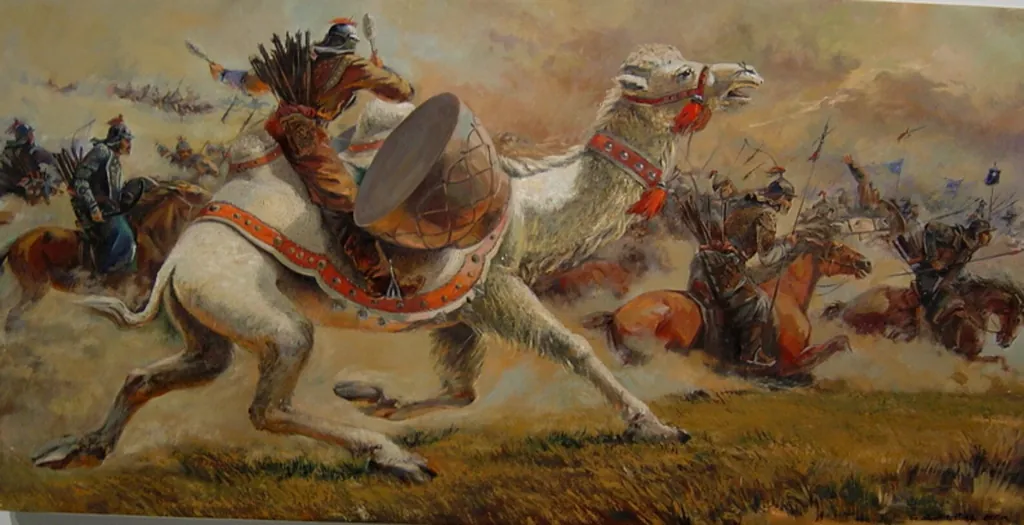
The history of the Kyrgyz people has roots far to the north. The earliest mentions of the Kyrgyz in chronicles relate to the Saka–Usun circle of peoples, and Chinese annals refer to tribes in Southern Siberia under the name “Ge-kun.” The Kyrgyz formed as a people in the upper reaches of the Yenisei (in present-day Tuva and Khakassia). In 840, the Yenisei Kyrgyz defeated the Uighur Khaganate and briefly became masters of the steppe. The memory of this is reflected in the epic “Manas,” where the hero Manas unites disparate tribes. Gradually, the Kyrgyz moved south: by the 10th century they had reached the Tian Shan and began to settle mountain pastures and valleys. For about two centuries the nomadic princes of the Kyrgyz controlled part of the Great Silk Road until their hegemony was undermined by new waves of conquest.
In the 12th century, nomads known as the Khitans (the Kara-Khitai people, originating from Northern China) replaced the Turkic dynasties, creating their own empire - the Western Liao (the Kara-Khitan Khanate) - on the lands of the Karakhanids. However, at the beginning of the 13th century an even more formidable power loomed over the entire region - the Mongol Empire of Genghis Khan. In 1218–1220, Mongol tumens seized Central Asia, and by 1227 the sons of Genghis Khan had subjugated the tribes of the Yenisei Kyrgyz. Part of the Yenisei Kyrgyz migrated to the Tian Shan and peacefully entered the possessions of the Mongol state around 1207. Following the Mongol conquerors, a new wave of nomadic empires came to the territory of Kyrgyzstan: the uluses of Chagatai and Jochi (the Golden Horde) ruled here in turn. Archaeological finds indicate that despite the devastation of cities, life along the caravan routes did not cease - for example, Nestorian gravestones of the 13th–14th centuries are found in the Chu Valley.
After the collapse of the unified Mongol Empire, the Kyrgyz tried to gain independence. Around 1510 they threw off the rule of Chagatai’s descendants, and the mountain tribes again became free, reviving clan self-government. However, the region remained an arena of struggle among neighboring powers. In the 17th century, the Oirats (Kalmyks) - Western Mongol tribes who created the Dzungar Khanate - poured into Kyrgyz lands from the east. The Kyrgyz, in alliance with the Kazakhs, resisted the Dzungar invasion but often suffered defeats and retreated to the mountains. In the mid-18th century the Dzungar Khanate was destroyed by Qing China, and part of the Kyrgyz formally became vassals of the Qing Empire. In reality, however, the mountainous areas retained relative independence, maneuvering between China, the Kazakh zhuzes, and the newly formed Kokand Khanate in the west. In the early 19th century, taking advantage of the weakening Dzungar threat, the Kokand khan captured the Fergana Valley and established control over the south of modern Kyrgyzstan, including Osh and Jalal-Abad. The northern Kyrgyz tribes remained longer outside the firm power of the khanates, but they too experienced pressure: in 1825 the Kokand founded the fortress of Pishpek on the site of present-day Bishkek. By the 1840s, a significant part of Kyrgyz tribes recognized vassal dependence on Kokand. Nevertheless, there was no unified Kyrgyz state then, although attempts at unification were made. In 1842, the manap Ormon Niyazbekov proclaimed himself khan and created the Kara-Kyrgyz Khanate, which existed for a short time. After the death of Ormon Khan (1854), the tribes again split. On the eve of the Russian conquest, the Kyrgyz represented a conglomerate of clan unions formally subordinate to the Kokand khan but in fact quite autonomous.
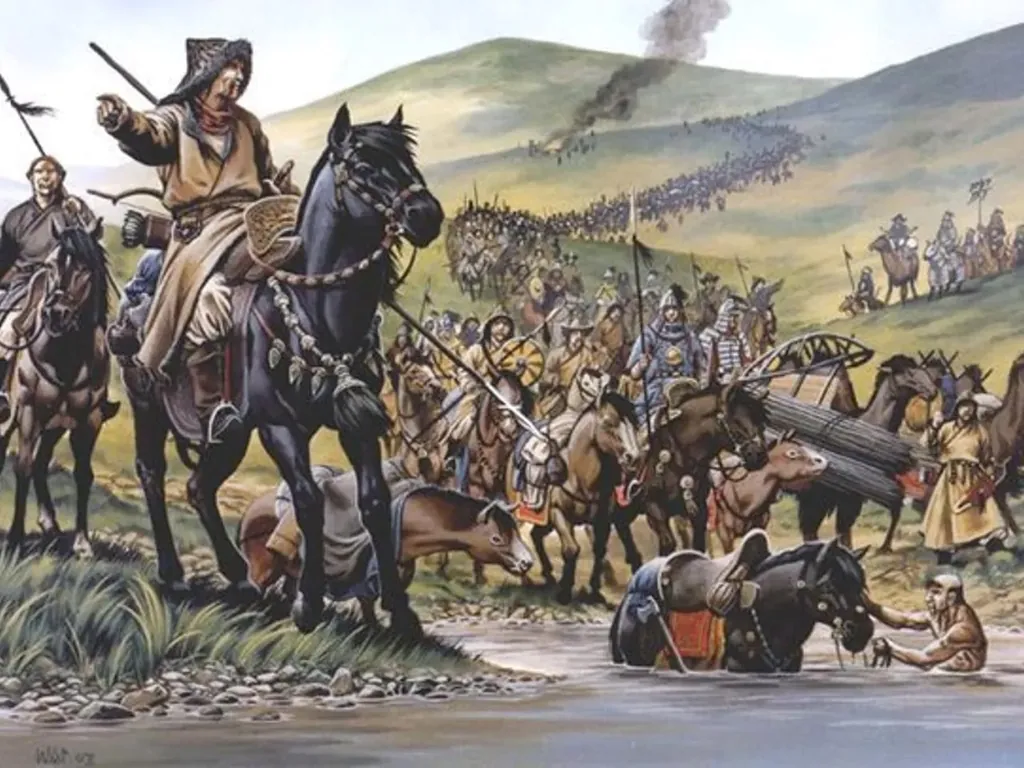
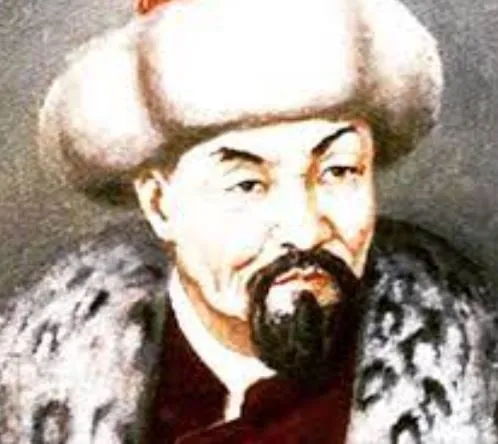
In the 19th century, Central Asia turned into an arena of geopolitical rivalry between the British and Russian Empires - this covert struggle was called the “Great Game.” The mountainous region of Kyrgyzstan, especially the Pamirs and the Tian Shan, was strategically important: control over it meant access to the borders of British India and Kashgaria. Russian explorers and military units gradually advanced into the Tian Shan, concluding alliances with local manaps. A landmark figure of this period is Kurmanjan Datka, a woman-ruler from the Alai Valley. After her husband, Datka Alimbek (the ruler of Alai), was killed in 1862, Kurmanjan took power into her own hands. She received the respectful title “Queen of Alai” and managed to maintain order in the region. When in 1876 the Russian Empire defeated the Kokand Khanate and approached Alai, Kurmanjan soberly assessed the situation. Understanding the futility of resistance, she persuaded her tribesmen to accept Russian protection peacefully, which avoided bloodshed. Southern Kyrgyzstan relatively calmly came under Russian rule, and Kurmanjan Datka entered history as a symbol of wisdom and diplomatic talent. The Russian authorities honored her, called her the “queen of the south,” and even left her a certain freedom of governance. Legends say that when one of her sons was sentenced to death for smuggling, Kurmanjan refused to ask for clemency, placing the interests of the people above personal tragedy. The image of this outstanding woman is immortalized today on the 50 som banknote and in the film “Kurmanjan Datka: Queen of the Mountains.” Her story is a rare example of female leadership in Muslim Central Asia of the 19th century.
Parallel to Kurmanjan’s diplomatic successes, the advance of the Russian Empire into northern Kyrgyzstan proceeded by military means. As early as 1860, General Kolpakovsky’s detachment captured the Kokand fortifications of Tokmak and Pishpek. In 1867, the Turkestan Governor-Generalship was created on the conquered lands, and by 1876, after the final defeat of Kokand, the entire territory of modern Kyrgyzstan became part of Russia. Thus ended the centuries-long period of relative isolation of the Kyrgyz highlanders - they became subjects of the tsar.
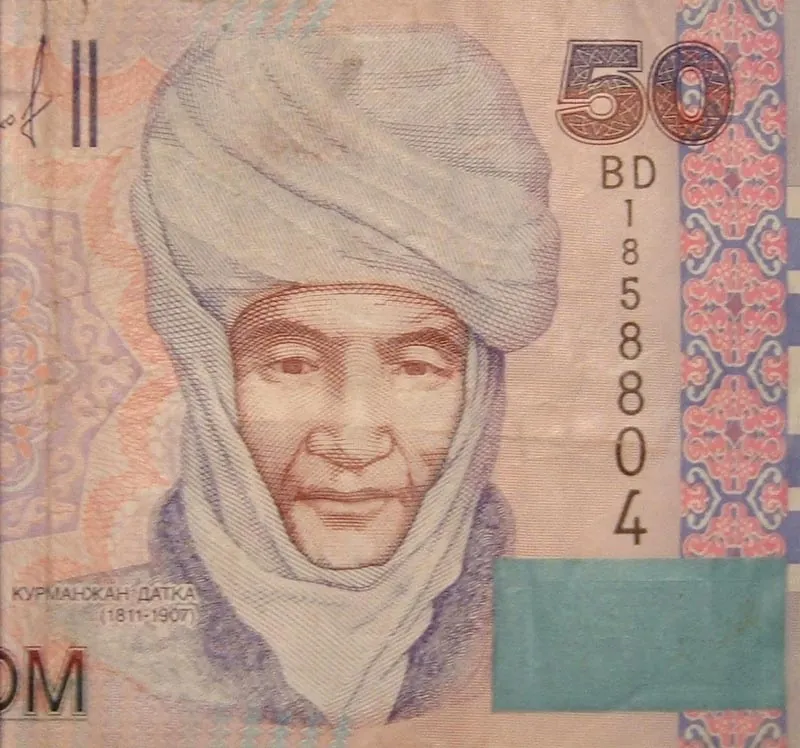
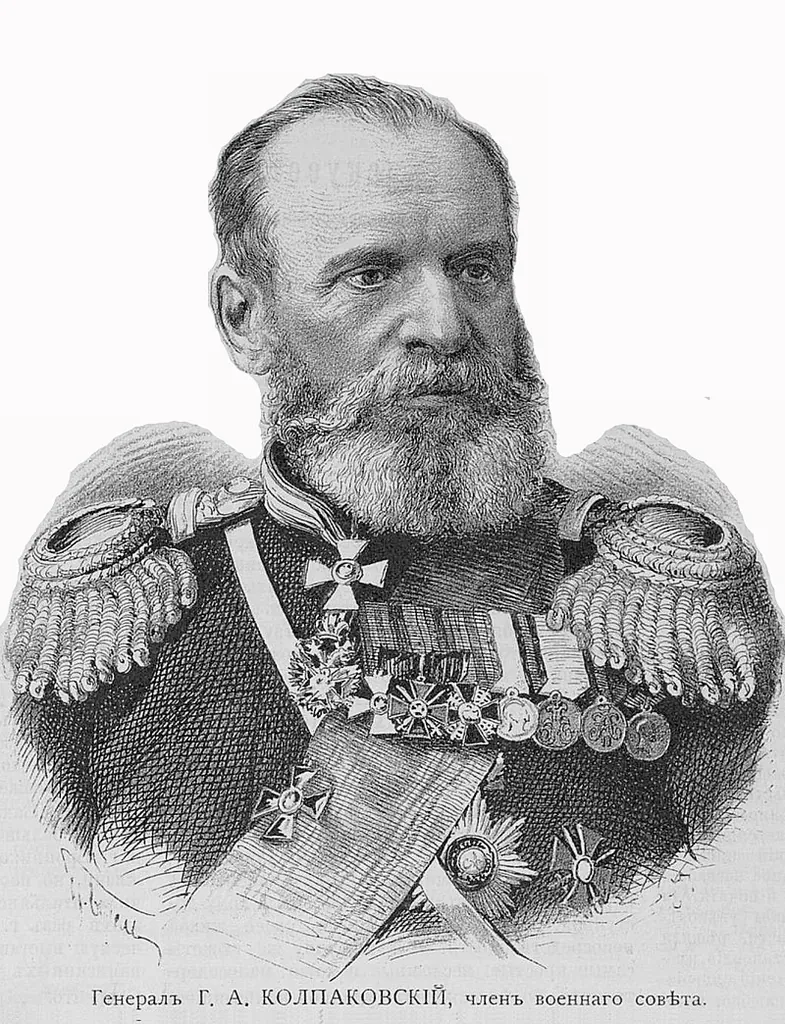
The incorporation of Kyrgyz lands into the Russian Empire brought significant changes. By the early 20th century, Russian settlers - peasants from European Russia - had appeared here, cultivating the fertile lands of the Chuy Valley and adjacent plains. New settlements with Russian populations were founded, postal routes were laid, and road construction began. In Pishpek (Bishkek) and Osh, the first Russo-native schools opened, where children of the local nobility learned literacy. The colonial administration sought to integrate the region into the empire’s economic system: enterprises for cotton processing, tanneries were established, and railway construction began (feeder branches from Tashkent to northern Kyrgyzstan). However, the resettlement policy also exacerbated the land question. Russian newcomers occupied the best pastures and arable land, pushing Kyrgyz auls onto less suitable terrain. The nomadic way of life began to change: some Kyrgyz adopted sedentary farming under the influence of Russian agronomists and missionaries, but many viewed innovations with anxiety.
Dissatisfaction with colonial oppression erupted into the largest popular movement - the uprising of 1916. The cause was the tsarist authorities’ order to mobilize the local Muslim population for rear work in the midst of World War I. For the Kyrgyz and Kazakhs, who had not previously been called to military service, this labor requisition was a shock. In the summer of 1916, riots flared up, growing into an armed uprising (known as Urkun - “Exodus”). The insurgents attacked Russian settlements, and tsarist troops brutally suppressed the rebellion. The result was mass death and flight of the Kyrgyz: tens of thousands of refugees rushed through mountain passes into China, fleeing punitive expeditions. Urkun of 1916 left a deep wound in historical memory - virtually every Kyrgyz family lost relatives or was forced to leave its homeland. In the Russian Empire, these events became one of the harbingers of the impending collapse of the tsarist regime.
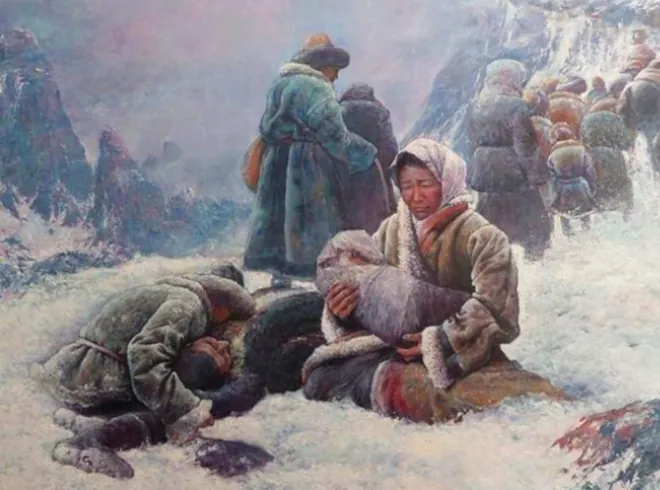
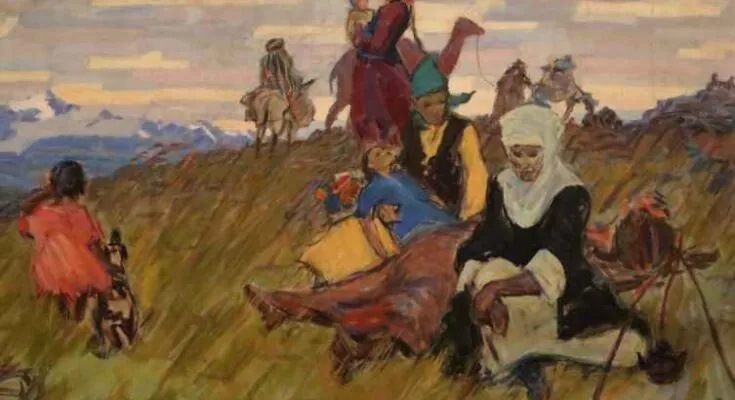
After the October Revolution of 1917, power in the territory of Kyrgyzstan passed to the Soviets. A new stage of history began - the Soviet period, which lasted more than 70 years. In 1918–1920, the Civil War raged, during which Red partisans established control over Pishpek, Osh, and other key locations. In 1924, the Bolsheviks carried out national-territorial delimitation of Central Asia: the Kara-Kyrgyz Autonomous Oblast within the RSFSR was formed. The term “Kara-Kyrgyz” was used by Russians to distinguish ethnic Kyrgyz from Kazakhs, who at that time were also called “Kirghiz.” In 1926, the oblast’s status was elevated to the Kirghiz ASSR, and on December 5, 1936, the republic became a union republic - the Kirghiz SSR - a full-fledged subject of the Soviet Union.
The Soviet authorities undertook socialist transformations of the region with vigor. In the 1920s–30s, illiteracy was eradicated: schools, technical colleges, and a national theater opened. If in pre-revolutionary Turkestan the majority of the population could not read, by the late 1930s literacy among the Kyrgyz had grown significantly. In parallel, the written language underwent Latinization and Cyrillicization: first, in 1924 an alphabet based on Arabic script was introduced for Kyrgyz, then in 1928 it was replaced with Latin, and in 1940 Kyrgyz writing was switched to the Cyrillic alphabet, which remains in use to this day. All this facilitated the involvement of the indigenous population in Soviet culture and education.
The 1930s brought both industrial upsurge and severe trials. As part of Stalin’s five-year plans, collectivization of agriculture and the sedentarization of the nomadic population began in Kyrgyzstan (then the official Russian name was “Kirgizia”). Kolkhozes and sovkhozes were created; in the Chuy Valley irrigation facilities for growing cotton and grain appeared. The first hydroelectric power plants on the Chu River were built, highways were laid, and a railway branch connecting Frunze (Bishkek) with the rest of the network (the Lugovaya–Balykchy section) was laid. The city of Frunze became the capital of the republic and acquired the features of a modern industrial center: factories (fur, leather, food), institutes, and technical colleges appeared. However, modernization was accompanied by tragedies. In 1937–38, Stalinist repressions swept through Kyrgyzstan: hundreds of representatives of the intelligentsia and party workers were arrested and executed, including prominent cultural figures (writers, poets, people’s commissars of education). Despite the losses, by the late 1930s a new Soviet national elite had formed, raised on the ideals of the “friendship of peoples.” The Kirghiz SSR was renowned for interethnic peace: in addition to Kyrgyz, Russians, Ukrainians, Tatars, Uighurs, Jews lived here - and together they built a “bright future.”
During the Great Patriotic War (1941–1945) tens of thousands of Kyrgyzstanis went to the front, and the republic received evacuated factories and people from the European part of the USSR. After the war, industrial development continued: deposits of non-ferrous metals were opened in Mailuu-Suu and Tyuya-Muyun, and the Frunze and Kara-Balta mining and processing plants were launched. By the 1970s, Kirgizia had become an important producer of mercury, antimony, uranium, and electricity. At the same time, traditional animal husbandry persisted - the famous Alai and Naryn pastures still fed flocks of sheep and herds of horses, although the life of nomads was now regulated by Gosplan.
The late 1980s brought the wind of perestroika. The first informal movements appeared in the republic, demanding recognition of environmental problems (the explosion at the Mailuu-Suu mercury plant) and solutions to housing issues. In June 1990, an interethnic conflict between Kyrgyz and Uzbeks broke out in the city of Osh, becoming a serious challenge for the republican authorities. Against the backdrop of a weakening union center, in October 1990 the Supreme Soviet of the Kirghiz SSR elected to the presidency a talented physicist Askar Akayev - representing a new generation of reformers. Thus Kyrgyzstan approached the attainment of independence.
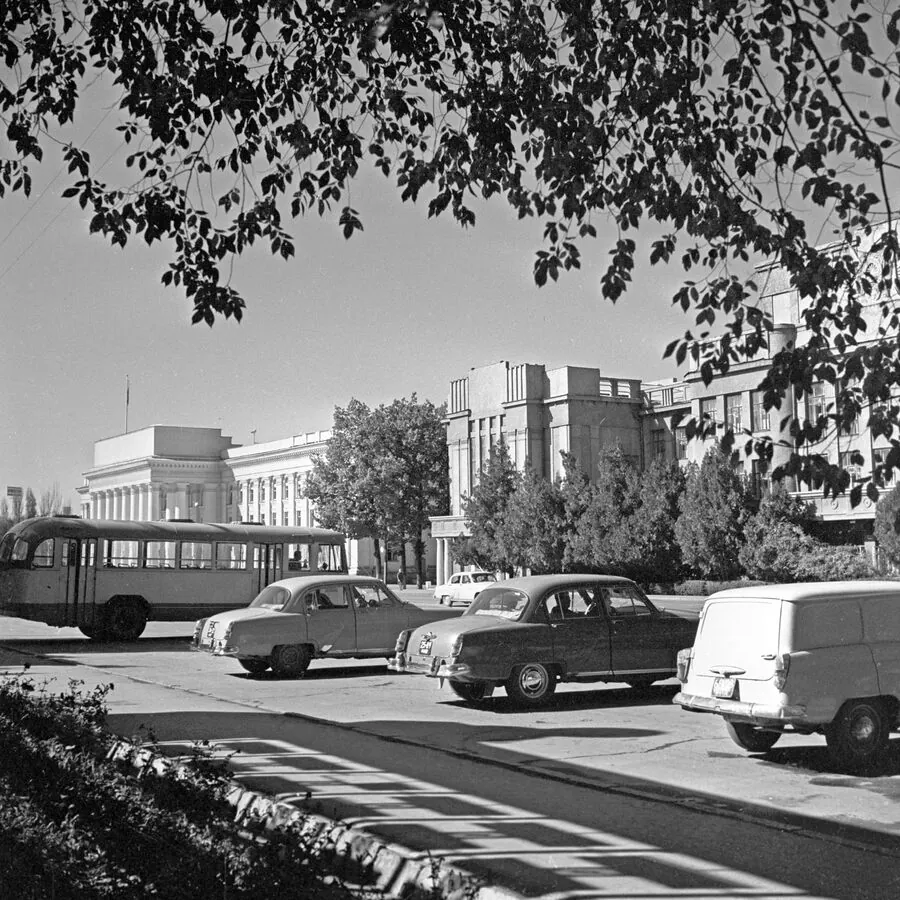
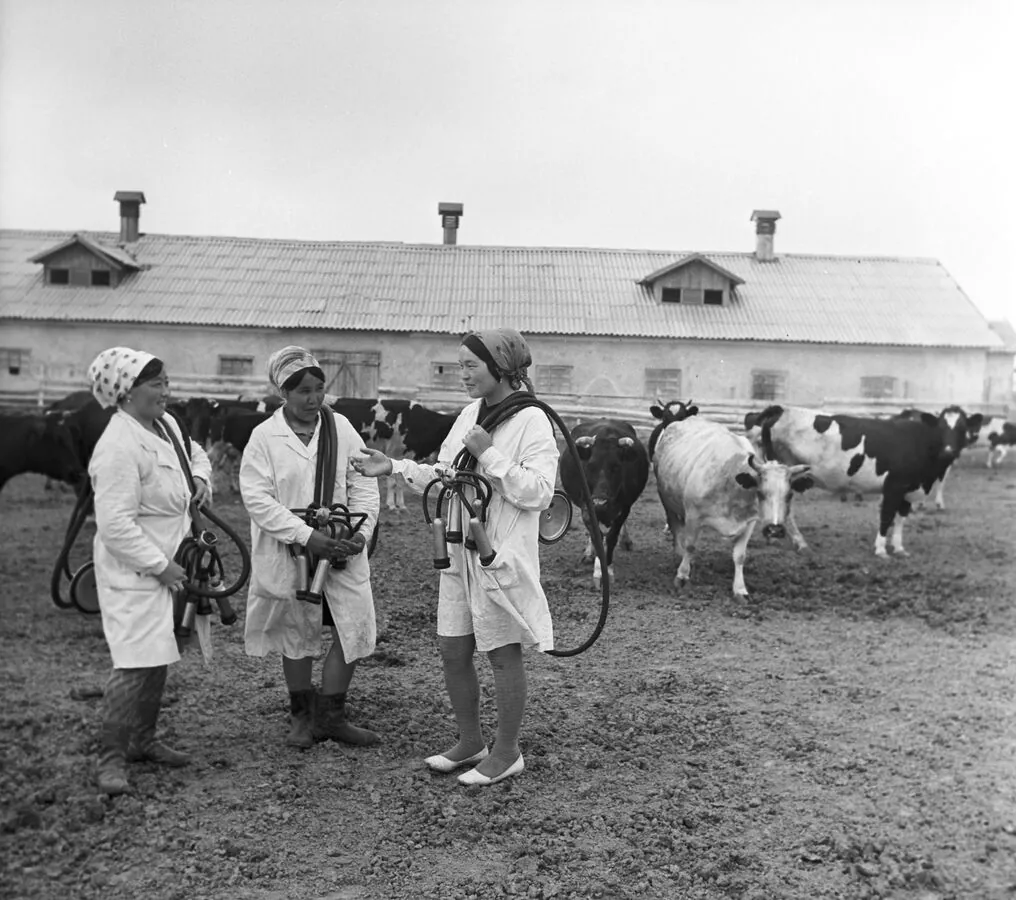
On August 31, 1991, the Kyrgyz Republic officially proclaimed independence from the disintegrating USSR. A difficult path of state formation began, accompanied by economic and political trials. The first president, Askar Akayev, initially enjoyed popular support, pursued market reforms, and declared a commitment to democracy. Kyrgyzstan gained a reputation as an “island of democracy” in Central Asia - in the 1990s the press was relatively free, and civil society emerged. However, the difficulties of the transition period (a production slump, a surge in corruption) gradually undermined trust in the authorities. In March 2005, dissatisfaction with the results of parliamentary elections turned into mass protests, especially in the south of the country. These events went down in history as the “Tulip Revolution” (2005). On March 24, thousands of demonstrators in Bishkek seized the government building; Akayev fled the country and soon resigned. Thus, after 14 years of continuous rule, the first president was ousted by a popular uprising.
Power passed to opposition leader Kurmanbek Bakiyev, who won the July 2005 elections. The new president promised to eradicate corruption and carry out constitutional reform, but over time his rule became authoritarian. Key business assets concentrated around the Bakiyev family, and political opponents were persecuted. Already in 2006–2007, Bishkek was rocked by rallies demanding limits on presidential powers. Bakiyev maneuvered, even signed amendments to the constitution, but soon regained power. In 2009, he was re-elected for a second term under conditions far from fair competition. Public fatigue with clan rule and poverty, aggravated in the winter of 2009–2010 by an energy crisis, grew.
In April 2010, popular outrage resulted in a second revolution. The immediate cause was a sharp increase in tariffs and the arrest of an opposition leader, which triggered spontaneous protests in the city of Talas. On April 7, 2010, demonstrations swept Bishkek - the protesters stormed the Government House. The security forces opened fire; dozens of people were killed, but the demonstrators did not retreat. Bakiyev fled the capital to the south, and the opposition formed an interim government headed by Roza Otunbayeva - an experienced diplomat and the only woman among the protest leaders. Otunbayeva became the first female head of state in Central Asia with a predominantly Muslim population. She had to stabilize the situation in the shortest time, which, in addition to the coup, was darkened by an ethnic conflict in the south: in June 2010, bloody clashes between Kyrgyz and Uzbeks erupted in Osh and Jalal-Abad, with up to 2,000 people killed. Otunbayeva declared a state of emergency, called for peace, and - having enlisted the support of the international community - managed to prevent further escalation. Then, on June 27, 2010, a referendum was held in the country, at which the people approved a new constitution - it significantly limited presidential power and strengthened the role of parliament. Roza Otunbayeva was confirmed as acting president for a transitional period until the end of 2011, after which she voluntarily handed over the post to the elected leader. Thus, Kyrgyzstan became the first parliamentary republic in the region, betting on the distribution of power.
At the end of 2011, elections were held in which Almazbek Atambayev - a colleague of Otunbayeva in the coalition - was elected president. His rule (2011–2017) passed relatively calmly, without upheavals. In 2017, Kyrgyzstan once again surprised its neighbors: Atambayev peacefully transferred power to the winner of the next elections, Sooronbay Jeenbekov. It was the first regular change of president by election in the country’s history. However, political stability remained fragile. In October 2020, after parliamentary elections, the opposition alleged fraud - and Kyrgyzstan experienced a third wave of protests. Riots began in Bishkek; crowds stormed the “White House” (the government residence), and hundreds of people were injured. Amid the chaos, protesters released politicians from prison, among them Sadyr Japarov. In a matter of days, Japarov became a popular favorite: parliament appointed him prime minister, and after Jeenbekov’s resignation on October 15, 2020, Japarov declared himself acting president. In January 2021, he won a confident victory in an extraordinary presidential election. The people, tired of turmoil, gave Japarov a mandate to strengthen order. At his initiative, in the same 2021 a referendum was held that abolished parliamentarism: the country returned to a strong presidential form of government. The new constitution increased the term of office of the head of state (to two five-year terms) and reduced the role of the government and parliament. In effect, Kyrgyzstan made a circle: from the presidential system of the 1990s through the parliamentary experiment of the 2010s - back to a super-presidential republic under Japarov.
Today, independent Kyrgyzstan is a little over three decades old. During this time the country has experienced ups and crises but has maintained a far more open political environment than many neighbors. Three peaceful revolutions have already taken place here; power has twice passed to the opposition; and freedom of speech and competition of ideas remain noticeable features of public life. Kyrgyzstan has become a member of the UN, OSCE, SCO (Shanghai Cooperation Organisation), and the Eurasian Economic Union - and strives to pursue a multi-vector foreign policy, balancing among Russia, China, the United States, and other partners. Economically, the country is betting on tourism (especially mountain and eco-tourism - Lake Issyk-Kul, Jengish Chokusu/Peak Pobeda and Lenin Peak attract mountaineers), hydropower, and agriculture. At the same time, many citizens work abroad (mainly in Russia and Kazakhstan), sending money home and supporting the economy.
A separate source of pride for independent Kyrgyzstan is the preservation of the rich cultural heritage of the nomads. The epic “Manas,” the greatest heroic tale about the Kyrgyz past, is included by UNESCO in the list of the Intangible Cultural Heritage of Humanity and is studied in schools on a par with world literature. Since 2014, at the initiative of President Atambayev, the World Nomad Games have been held - a vibrant festival of national sports and traditions. The first three Games were held on the shores of Issyk-Kul and gathered participants from more than 50 countries. The program includes equestrian competitions, eagle hunting, wrestling, ethno-music, and crafts. These colorful tournaments revive ancient customs and draw the world’s attention to nomadic heritage, cementing Kyrgyzstan’s status as a guardian of nomad culture. Young people are increasingly interested in their roots - the traditional yurt, national dress, and the art of playing the komuz. Thus, after a long journey through the centuries, Kyrgyzstan carefully carries its unique historical identity through time, connecting past and present.
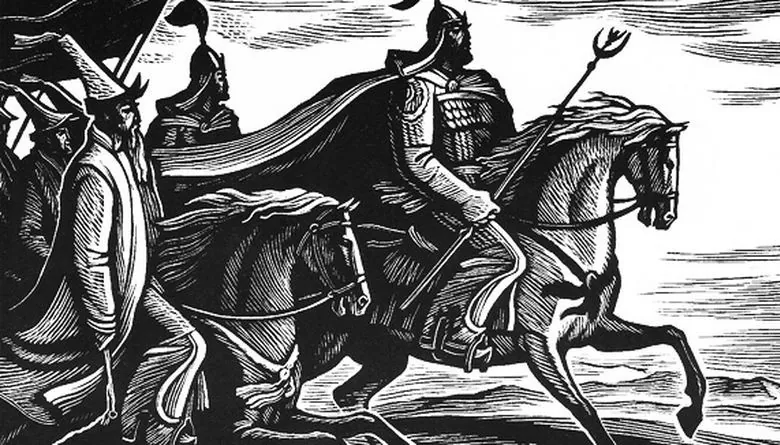
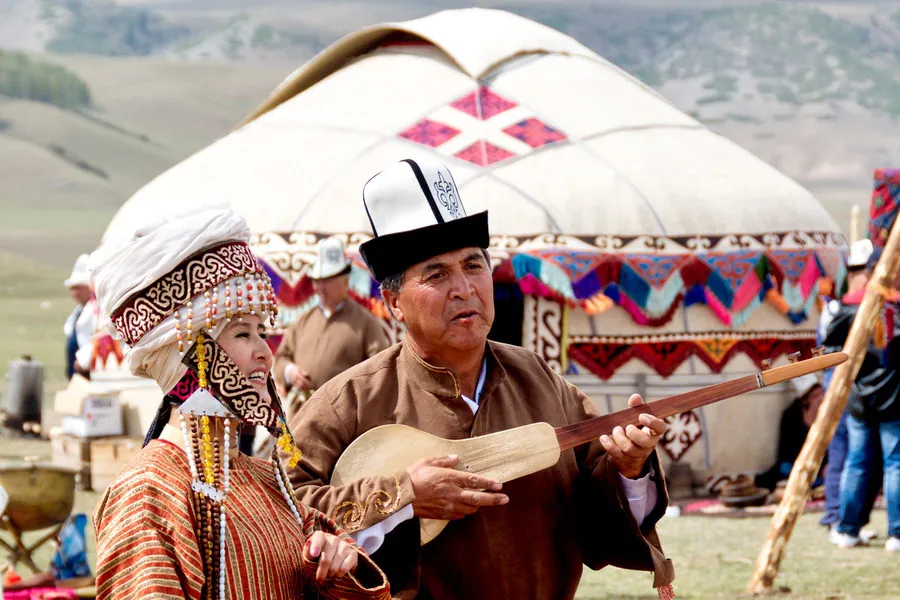
A question arises: why is the country still often called “Kirgizia” in Russian, although the official name is “Kyrgyzstan”? The point lies in historical traditions and the people’s self-designation. The word “Kyrgyzstan” is formed from the ethnonym Kyrgyz with the addition of the Turkic suffix -stan (“country”), i.e., it means “the country of the Kyrgyz.” After gaining independence in 1991, the republic’s leadership sought to establish precisely this name in international usage - as reflecting national identity.
Officially, in the Russian language the new name was fixed by a resolution of the Supreme Soviet in 1993, when the constitution of the Kyrgyz Republic was adopted. In UN documents and other organizations, the country appears as the Kyrgyz Republic (Kyrgyzstan), with the code KGZ. Nevertheless, the word “Kirgizia” took root back in the times of the Russian Empire and the Soviet Union - then there existed the Kirghiz ASSR and later the Kirghiz SSR. In Russian encyclopedias and laws, this Russian name was used for a long time. Therefore, even now many native Russian speakers habitually say “Kirgizia,” without implying anything pejorative.
In the republic itself, since the 1990s the name “Kyrgyzstan” has been established as the sole correct form at the state level. Use of the old form is seen as undesirable. For example, on Russian maps and in the media, “Kirgizia” was written by inertia, but official delegations from Bishkek repeatedly pointed out the need to change this practice. Gradually the situation is improving: more and more often even in Russian-language publications the name Kyrgyzstan is used. Thus, the duality of names is connected rather with linguistic nuances and history. Kyrgyzstan is the modern and preferred name of the state, reflecting its sovereign status. And “Kirgizia” remains as an archaism, an echo of the Soviet era, although it still sometimes occurs in informal speech. The main thing is that behind these names stands one and the same great country with rich traditions and a people striving toward the future.
Visit the Valley of the Seven Bulls, see Issyk-Kul and relax in the thermal springs
Forgotten Rivers and Mountain Peaks: A Journey Along the Southern Shore of Issyk-Kul is a three-day tour that immerses you in the unique natural beauty of Kyrgyzstan.
This route combines the picturesque mountain canyons of Kok-Moinok, Lake Issyk-Kul, the taste of national cuisine and a trip along one of the most beautiful roads in the country – the Boom Gorge.
Visit two pearls of Kyrgyzstan in 1 day on a car tour
In two days, we'll ascend to 3500-meter peaks, sit by the campfire in the heart of the Tien Shan range by Lake Son-Kul, and have an amazing time
Experience all the beauty of Kyrgyzstan's nature behind the wheel of a comfortable and daring BMW F650GS tour enduro. These impressions are worth any money and will never be forgotten.